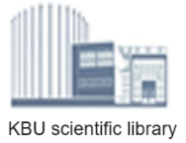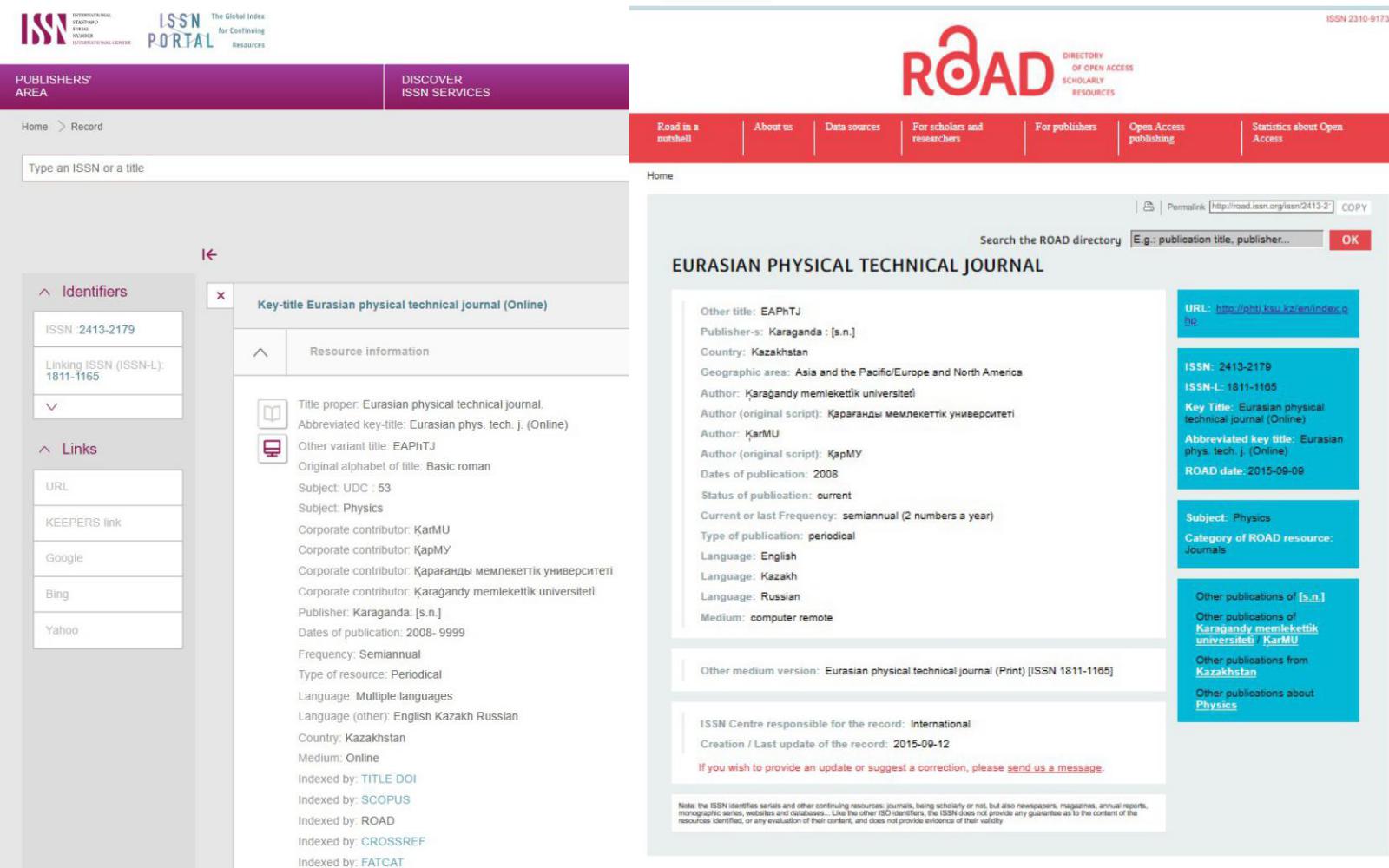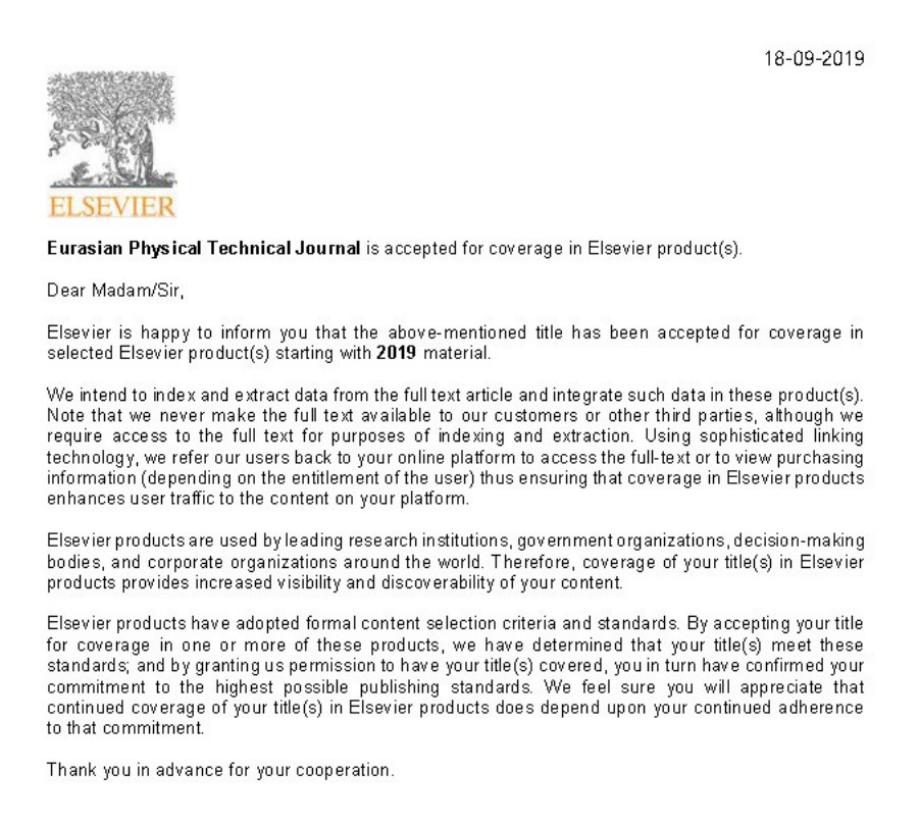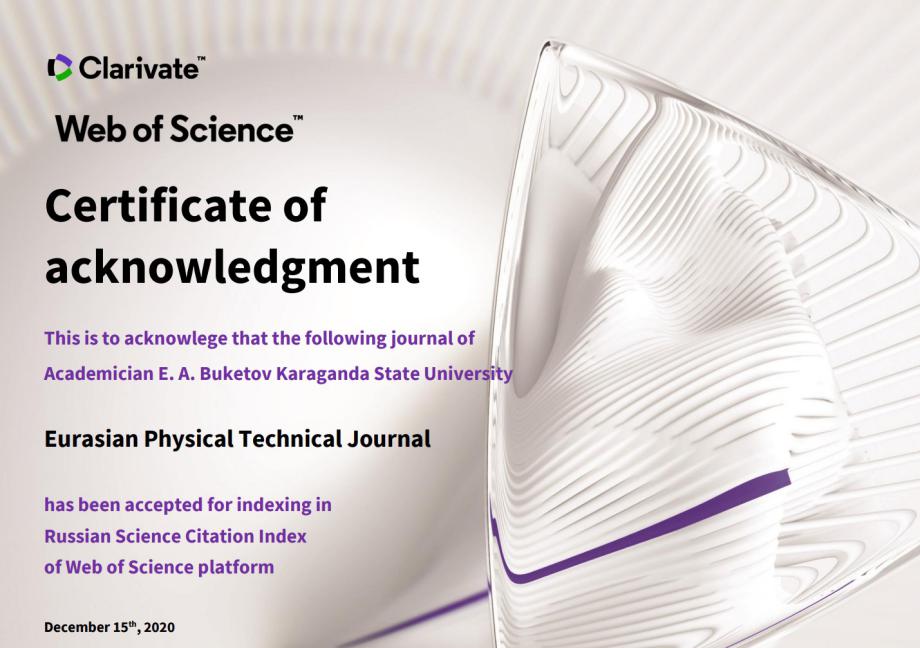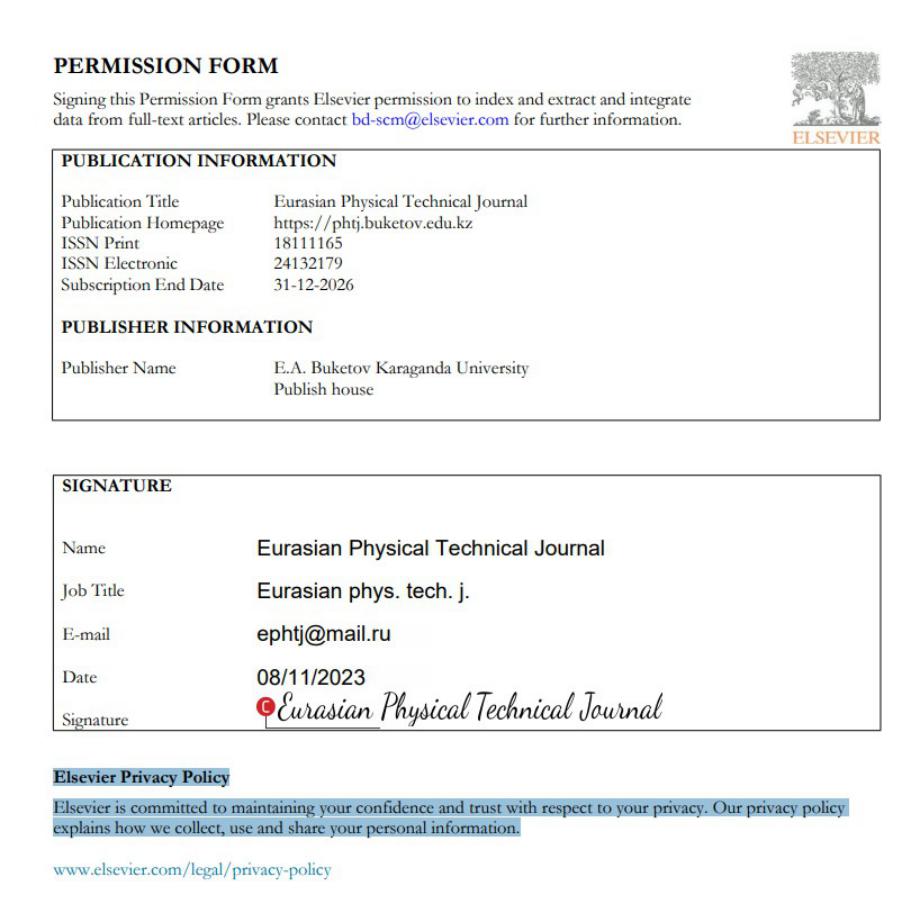I астероидтардың спектрофотометриялық зерттеуі: шағылу спектрі
DOI:
https://doi.org/10.31489/2025N2/133-146Кілт сөздер:
спектрофотометрия, астероидтар, шағылу спектрі, Gaia DR3Аңдатпа
2024 жылғы 22 ақпан, 2023 жылғы 3 қараша, 4 қараша және 21 қарашада Ассы-Түрген обсерваториясында (шығ. бойлығы 77°.87114, солт. ендігі 43°.225527, теңіз деңгейінен биіктігі 2658 м, Халықаралық обсерваториялар коды — 217) жүргізілген бақылаулар негізінде астероидтардың шағылу спектрлерін талдау нәтижелері келтірілген. Бақылаулар апертурасы 1,5 метрлік AZT-20 телескопының негізгі фокусына орнатылған көлемдік-фазалық голографиялық торлар (VPHG) негізіндегі ұзын саңылаулы спектрографты пайдалана отырып жүргізілді. Бақылаулар төменгі спектрлік ажыратымдылық режимінде (R=600), 3500–7500 Å толқын ұзындықтары диапазонында, әр миллиметрде 360 сызықты торды, пиксельге 4.25 Å дисперсияны қолдана отырып, бірінші биннингте EMCCD режимінде, күшейту коэффициенті 5 және экспозиция уақыты 10 секунд, саңылау ені 9 доғалық секунд болған жағдайда жүзеге асырылды. Астероид спектрлерін өлшеу дифференциалдық әдіспен - объект пен стандартты жұлдыз арасындағы жарық ағындарын салыстыру арқылы жүргізілді. Стандарт ретінде Күн тектес-жұлдыздар (G спектрлік класы) пайдаланылды. Шағылу спектрлерін өңдеу мен есептеу, сондай-ақ спектрлік морфология мен таңдап алынған спектрлік сипаттамалар негізінде Tholen және SMASSII жүйелері бойынша таксономиялық жіктеу жүргізілді. Бұл жұмыс негізінен Басты белбеу мүшелері (14) болып табылатын 19 астероидтан тұратын таңдама үшін орындалды. Талдау нәтижелері 2013–2017 жылдары ИНАСАН жүргізген бақылаулар негізіндегі астероидтар спектрлерімен және Gaia (DR3) миссиясы арқылы алынған шағылу спектрлерімен салыстырылды, және альбедо көрсеткіштерін ескерусіз таксономиялық типтері анықталды.
References
Board S.S. (2010) Defending Planet Earth: Near-Earth Object Surveys and Hazard Mitigation Strategies. National Academies Press, 152. https://doi.org/10.17226/12842 DOI: https://doi.org/10.17226/12842
Binzel R.P. (2019) Small bodies looming large in planetary science. Nature Astronomy, 3(4), 282-283. https://doi.org/10.1038/s41550-019-0747-6 DOI: https://doi.org/10.1038/s41550-019-0747-6
DeMeo F.E., Carry B. (2014) Solar System evolution from compositional mapping of the asteroid belt. Nature, 505, 629-634. https://doi.org/10.48550/arXiv.1408.2787 DOI: https://doi.org/10.1038/nature12908
Clark B.E., Hapke B., Pieters C., Britt D. (2002) Asteroid Space Weathering and Regolith Evolution. Asteroids III, 585-599. Available at: https://www.researchgate.net/publication/253857329_Asteroid_Space_Weathering _and_Regolith_Evolution DOI: https://doi.org/10.2307/j.ctv1v7zdn4.44
Lupishko D., Karazin V.N. (2000) Physical properties of asteroids. Astronomical School’s Repor., 1(2). 63-77. https://doi.org/10.18372/2411-6602.01.2063 DOI: https://doi.org/10.18372/2411-6602.01.2063
Shepard M.K. (2005) A Long-Term Radar Survey of M-Class Asteroids. Bulletin of the American Astronomical Society, 37. 628. Available at: https://ui.adsabs.harvard.edu/abs/2005DPS....37.0707S/abstract
Hardersen P.S., Cloutis E.A., Reddy V., Mothe-Diniz T., Emery J.P. (2011). The M-/X-asteroid menagerie: Results of an NIR spectral survey of 45 main-belt asteroids. Meteoritics & Planetary Science, 46(12). 1910-1938. https://doi.org/10.1111/j.1945-5100.2011.01304.x DOI: https://doi.org/10.1111/j.1945-5100.2011.01304.x
De Pater, Imke; Lissauer, Jack Jonathan (2001). Planetary sciences. Cambridge University Press. 528. Available at: https://books.google.kz/books?id=RaJdy3_VINQC&printsec=frontcover&hl=ru&source=gbs_ ge_summary_r&cad=0#v=onepage&q&f=false
Ehrenfreund P., Irvine W.M., Owen T., Becker L., Jen Blank, Brucato J.R., Colangeli L., Derenne S., Dutrey A., Despois D., Lazcano A., Robert F. (2004). Astrobiology: Future Perspectives. Springer Science & Business. 159. Available at: https://www.amazon.ae/Astrobiology-Future-Perspectives-P-Ehrenfreund/dp/1402023049 DOI: https://doi.org/10.1007/1-4020-2305-7
McSween Jr, Harry Y. (1999). Meteorites and their Parent Planets. Cambridge University Press. 324. Available at: https://www.amazon.com/Meteorites-Parent-Planets-Harry-McSween/dp/0521587514
Busarev V.V., Shcherbina M.P., Barabanov S.I., Irsmambetova T.R., Kokhirova G.I., Khamroev U.Kh., Khamitov I.M., Bikmaev I.F., Gumerov R.I., Irtuganov E.N. & Mel’nikov S.S. (2019) Confirmation of the Sublimation Activity of the Primitive Main-Belt Asteroids 779 Nina, 704 Interamnia, and 145 Adeona, as well as its Probable Spectral Signs on 51 Nemausa and 65 Cybele. Solar System Research, 53. 261-277. https://doi.org/10.1134/ S0038094619040014 DOI: https://doi.org/10.1134/S0038094619040014
Gaia Collaboration: L. Galluccio, et al. (2023) Gaia Data Release 3: Reflectance spectra of Solar System small bodies. A&A, 674 (A35), 29. https://doi.org/10.1051/0004-6361/202243791] DOI: https://doi.org/10.1051/0004-6361/202243791
Pinilla-Alonso, Noem, de Le´on, J., Walsh, K. J., Campins, H., Lorenzi, V., Delbo, M., DeMeo, F., Licandro, J., Landsman, Z., Lucas, M. P., Al´ı-Lagoa, V., Burt, B. (2016) Portrait of the Polana-Eulalia Family Complex: Surface homogeneity revealed from Near-Infrared Spectroscopy. Icarus, 274:231-248. https://doi.org/10.1016/j.icarus.2016.03.022 DOI: https://doi.org/10.1016/j.icarus.2016.03.022
Cellino A., Ph. Bendjoya, M. Delbo, L. Galluccio, J. Gayon-Markt, P. Tanga, and E. F. Tedesco (2020) Ground-based visible spectroscopy of asteroids to support the development of an unsupervised Gaia asteroid taxonomy. A&A, 642. A80. https://doi.org/10.1051/0004-6361/202038246 DOI: https://doi.org/10.1051/0004-6361/202038246
de León, J. Licandro, M. Serra-Ricart, N. Pinilla-Alonso, H. Campins (2010) Observations, compositional, and physical characterization of near-Earth and Mars-crosser asteroids from a spectroscopic survey. A&A, 517. A23. https://doi.org/10.1051/0004-6361/200913852 DOI: https://doi.org/10.1051/0004-6361/200913852
Raḿırez I, R. Michel, R. Sefako, M. Tucci Maia, W. J. Schuster, F. van Wyk, J. Melendez, L. Casagrande, and B. V. Castilho (2012). The UBV(RI) Colors of the Sun. The Astrophysical Journal, 752, 5, 13. https://doi.org/10.1088/0004-637X/752/1/5 DOI: https://doi.org/10.1088/0004-637X/752/1/5
Tedesco E.F., Tholen D.J., Zellner B. (1982) The eight-color asteroid survey - Standard stars. AJ, 87(11). 1585-1592. Available at: https://adsabs.harvard.edu/full/1982AJ.....87.1585T DOI: https://doi.org/10.1086/113248
Farnham T. L., Schleicher D. G., A’Hearn M. F. (2000) The HB Narrowband Comet Filters: Standard Stars and Calibrations. Icarus, 147(1), 180-204. https://doi.org/10.1006/icar.2000.6420 DOI: https://doi.org/10.1006/icar.2000.6420
Tinaut-Ruano F., E. Tatsumi, P. Tanga, J. de León, M. Delbo, F. De Angeli, D. Morate , J. Licandro, and L. Galluccio (2023). Asteroids’ reflectance from Gaia DR3: Artificial reddening at near-UV wavelengths. A&A, 669, L14. https://doi.org/10.1051/0004-6361/202245134] DOI: https://doi.org/10.1051/0004-6361/202245134
Serebryanskiy A.V., Omarov Ch.T., Aimanova G.K., Krugov M.A., Akniyazov Ch.B. (2022). Spectral Observations of Geostationary Satellites. Eurasian Physical Technical Journal, 19(2). 93-100. https://doi.org/10.31489/2022No2/93-100 DOI: https://doi.org/10.31489/2022No2/93-100
Virtanen P., Ralf Gommers, Travis E. Oliphant, Matt Haberland, Tyler Reddy, David Cournapeau, Evgeni Burovski, Pearu Peterson, Warren Weckesser, Jonathan Bright, Stéfan J. van der Walt, Matthew Brett, Joshua Wilson, K. Jarrod Millman, Nikolay Mayorov, etc., and SciPy 1.0 Contributors. (2020) SciPy 1.0: Fundamental Algorithms for Scientific Computing in Python. Nature Methods, 17(3), 261-272. https://doi.org/10.1038/s41592-019-0686-2 DOI: https://doi.org/10.1038/s41592-020-0772-5
Tholen D.J. Asteroid taxonomic classifications. (1989) IN: Asteroids II; Proceedings of the Conference, Tucson, AZ, Mar. 8-11, 1988 (A90-27001 10-91). Tucson, AZ, University of Arizona Press, 1139-1150. Available at: https://ui.adsabs.harvard.edu/abs/1989aste.conf.1139T/abstract
Shcherbina M.P., Busarev V.V., Barabanov S.I. (2019) Spectrophotometric Studies of Near-Earth and Main-Belt Asteroids. Moscow University Physics Bulletin, 74(6). 675–678. Available at: https://link.springer.com/article/10.3103/ S0027134919060237 DOI: https://doi.org/10.3103/S0027134919060237
Savelova A.A., Busarev, V.V., Shcherbina, M.P., Barabanov, S.I. (2022) Using "templates" of spectral types of asteroids to enhance the mineralogy of these bodies and detect the signs of sublimation-pyretic and solar activity. INASAN Science Reports, 7, 143-148. http://dx.doi.org/10.51194/INASAN.2022.7.2.008 [in Russian] DOI: https://doi.org/10.51194/INASAN.2022.7.2.008
Downloads
Жарияланды
How to Cite
Журналдың саны
Бөлім
License

This work is licensed under a Creative Commons Attribution-NonCommercial-NoDerivatives 4.0 International License.


